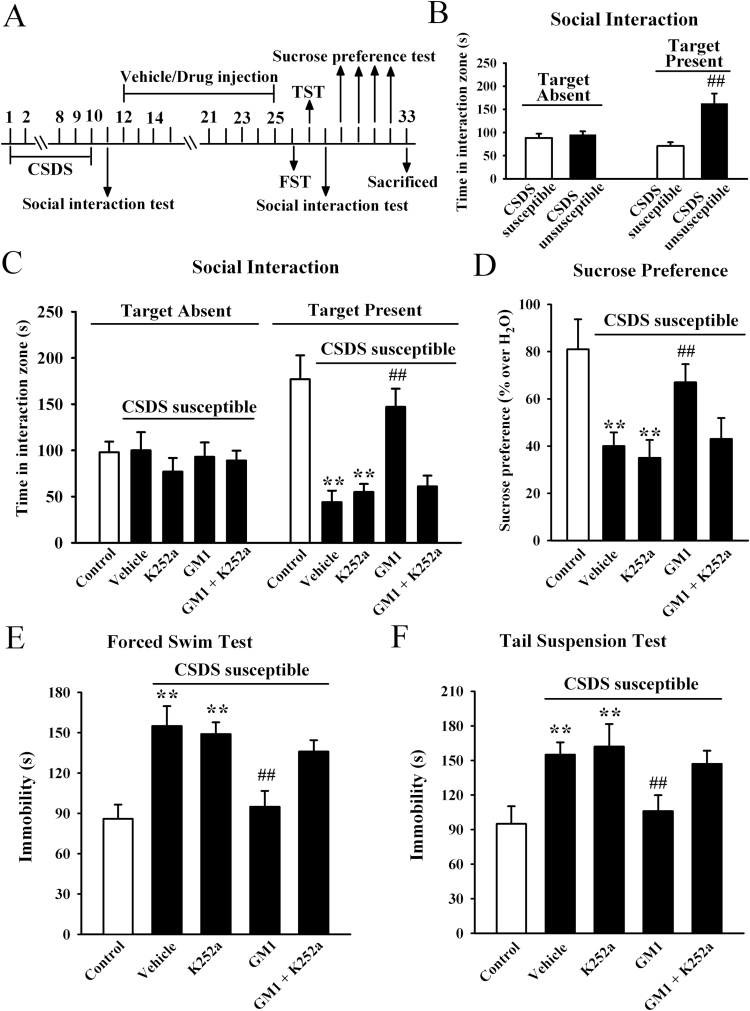Figure 3.
Blockade of brain derived neurotrophic factor (BDNF) signaling cascade by K252a abolishes the antidepressant-like actions of monosialotetrahexosylganglioside (GM1). (A) Schematic timeline of the experimental procedure. Total 73 C57BL/6J mice were used in this experiment with 62 chronic social defeat stress (CSDS)-stressed mice and 11 nonstressed mice. CSDS-susceptible mice were co-injected with GM1 and K252a for 14 days, and behavioral tests were then performed. The vehicle refers to 0.1% DMSO in 0.9% saline. (B) The social interaction results for CSDS-susceptible mice (n = 44) and unsusceptible mice (n = 18) in this experiment. (C) Co-treatment GM1 with K252a blocked the antidepressant-like effects of GM1 in the social interaction test. CSDS-susceptible + GM1 + K252a mice displayed significantly lower social interaction than CSDS-susceptible + GM1 mice (n = 11). (D) CSDS susceptible + GM1 + K252a mice displayed significantly lower sucrose preference than CSDS susceptible + GM1 mice (n=11). (E) CSDS susceptible+GM1+K252a mice displayed significantly higher immobility time than CSDS susceptible+GM1 mice in the forced swim test (FST) (n = 11). (F) CSDS-susceptible+GM1+K252a mice also displayed significantly higher immobility time than CSDS-susceptible + GM1 mice in the tail suspension test (TST) (n = 11). Data are expressed as the mean ± SEM; ** P<.01 vs control; ## P<.01 vs CSDS-susceptible/CSDS-susceptible + vehicle. Comparison was made by 2-way ANOVA followed by posthoc Bonferroni’s test.

